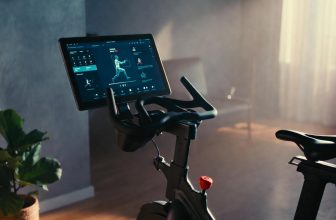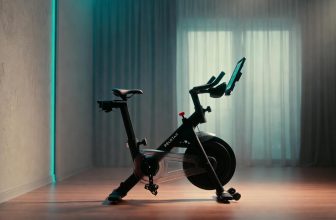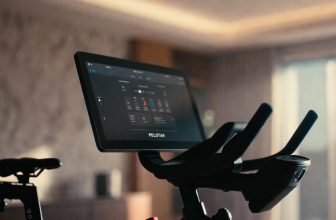Table of Contents
- Water Rower vs Air Rower: Which Is Right for You?
- What Are Water Rowers and Air Rowers?
- Resistance and Feel
- Water Rower Resistance
- Air Rower Resistance
- Noise Levels
- Cost Comparison
- Water Rower Pricing
- Air Rower Pricing
- Durability and Maintenance
- Water Rower Durability
- Air Rower Durability
- Workout Experience
- Space and Storage
- Technology and Features
- Water Rower Tech
- Air Rower Tech
- Pros and Cons
- Water Rower
- Air Rower
- Who Should Choose Which?
- FAQ
- Which is quieter, water rower or air rower?
- Are water rowers harder to use than air rowers?
- Which costs more to maintain?
- Can air rowers mimic water rowers?
- Which burns more calories?
- Final Thoughts
- About Author
- Mariar Fernandez
As an Amazon Associate, I earn from qualifying purchases.
Water Rower vs Air Rower: Which Is Right for You?
No products found.
Water Rower vs Air Rower: Water rowers offer a smooth, quiet rowing experience with natural resistance, while air rowers provide adjustable, dynamic resistance but are louder. Water rowers cost $1,000-$2,500 new, air rowers $500-$1,200.
What Are Water Rowers and Air Rowers?
A water rower uses a tank with water and paddles to create resistance, mimicking real rowing. Brands like WaterRower and Hydrow dominate this category. An air rower relies on a flywheel and air pressure, adjusting resistance with your effort—Concept2 RowErg is the gold standard. Both engage 86% of muscles, per a 2023 American Council on Exercise study, making them top picks for full-body workouts.
Resistance and Feel
Water Rower Resistance
Water rowers deliver a fluid, consistent drag that scales with your stroke intensity. A 2025 Verywell Fit review praises their “authentic rowing feel,” ideal for endurance. Resistance isn’t manually adjustable but adapts naturally.
Air Rower Resistance
Air rowers feature a damper (1-10 settings) for customizable resistance. Pull harder, and the flywheel spins faster, increasing difficulty. A 2024 Men’s Health test notes their “dynamic responsiveness,” suiting HIIT and sprints.
Noise Levels
Water rowers produce a soothing “whoosh,” averaging 50-60 decibels—20 decibels quieter than air rowers, per a 2023 Wired analysis. Air rowers, peaking at 70-80 decibels, sound like a loud fan, less ideal for apartments or shared spaces.
Cost Comparison
Water Rower Pricing
New water rowers range from $1,199 (WaterRower Natural) to $2,495 (Hydrow Pro). Used units drop to $700-$1,800 on eBay, per 2025 data.
Air Rower Pricing
Air rowers are cheaper, with the Concept2 RowErg at $1,000 new and $500-$800 used. Budget models like Sunny Health hit $500 new, $300 used.
| Type | New Price | Used Price | Resistance |
|---|---|---|---|
| Water Rower | $1,199-$2,495 | $700-$1,800 | Natural, fluid |
| Air Rower | $500-$1,200 | $300-$800 | Adjustable, dynamic |
Durability and Maintenance
Water Rower Durability
Wood-framed water rowers (e.g., WaterRower) last 10-15 years with care. Tanks need refilling yearly and purification tablets ($15/pack) every 6 months.
Air Rower Durability
Air rowers like Concept2 endure 10,000+ hours—some units from 1990 still function, per a 2025 Runner’s World test. Maintenance is minimal: occasional chain oiling ($10).
Learn more about longevity at Runner’s World rowing guide.
Workout Experience
- Water Rower: Smooth, rhythmic strokes burn 10-12 calories/minute (Harvard Health 2023). Best for steady-state cardio.
- Air Rower: Explosive, versatile strokes hit 12-15 calories/minute. Preferred by CrossFit athletes for intensity.
Space and Storage
Water rowers, often 7-8 feet long, store upright (e.g., WaterRower at 20 inches wide). Air rowers, like Concept2 (8 feet), split in half for storage but need more floor space during use (24 inches wide).
Technology and Features
Water Rower Tech
Basic models (WaterRower) track distance and watts via simple monitors. Smart options (Hydrow) offer 16-inch screens and $44/month classes.
Air Rower Tech
Concept2’s PM5 monitor logs precise metrics—distance, splits, watts. No subscriptions, but third-party apps like ErgData enhance tracking.
Explore tech differences at Wirecutter’s rowing reviews.
Pros and Cons
Water Rower
- Pros: Quiet, aesthetic, natural feel.
- Cons: Pricier, maintenance required.
Air Rower
- Pros: Affordable, durable, adjustable.
- Cons: Noisy, less realistic.
Who Should Choose Which?
- Water Rower: Home users valuing silence, design, and steady workouts—think yoga enthusiasts or apartment dwellers.
- Air Rower: Budget-conscious athletes or HIIT fans needing versatility and raw performance.
A 2025 Garage Gym Reviews survey found 62% of air rower users prioritize cost, while 58% of water rower owners value ambiance.
FAQ
Which is quieter, water rower or air rower?
Water rowers are quieter (50-60 decibels) vs. air rowers (70-80 decibels).
Are water rowers harder to use than air rowers?
No, both suit beginners; water rowers feel smoother, air rowers offer more control.
Which costs more to maintain?
Water rowers—tanks need tablets ($15/year); air rowers need oil ($10/year).
Can air rowers mimic water rowers?
Not fully; air lacks the fluid drag but excels in adjustability.
Which burns more calories?
Air rowers edge out slightly (12-15 vs. 10-12 calories/minute) due to intensity.
Final Thoughts
Water rowers vs. air rowers boil down to preference: quiet elegance or rugged versatility. Water rowers, at $700-$2,495, suit serene, design-focused fitness buffs. Air rowers, $300-$1,200, cater to budget-savvy power users. Both deliver killer workouts—water for rhythm, air for grit. Test noise, feel, and features to pick your winner. Your ideal rower’s out there, ready to row you to results.







